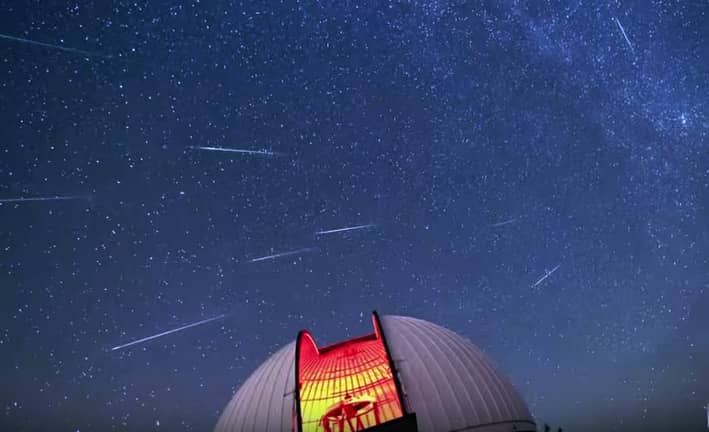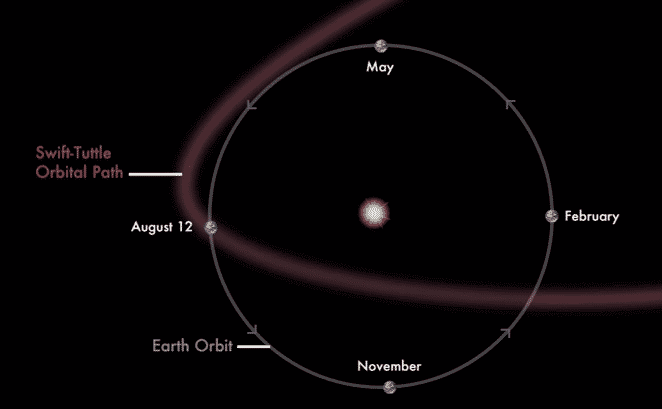

The Perseid Meteor Shower, annually timed during the dog days of summer, peaks late tonight and early Friday morning, in partly cloudy skies, but with nearly 200 meteors per hour predicted, this year may still dazzle night owl star gazers.
In the northern hemisphere, double the normal rate of meteors will fall through Earth’s atmosphere, according to Earthsky.org.
Interested meteor watchers should focus their viewing between midnight and dawn, and get as far away from city and town lights as possible. The Frosty Drew Observatory in Charlestown (the best spot in the state for stargazing with the least light pollution within the borders) will host their viewing event of the Perseids after sunset – bring blankets, sweaters and snacks.
On Thursday night, the observatory’s telescopes will showcase Saturn and the Moon until 11 p.m., after which they’ll go outside to watch meteors.
On Friday night, Frosty Drew opens at 7:30 p.m. with their regular Stargazing Night. In the Observatory, telescopes will showcase the night sky starting at sunset and continuing until 11 p.m. with views of Saturn, Mars, the Moon, binary stars, and more. After 11 p.m., it’s outside for more meteor watching.
Weather won’t be as nice on Friday, though – there’s a mostly cloudy sky forecast – but check on that later tonight for sudden improvements or changes, because, New England.
If Charlestown doesn’t suit you as a destination, try your luck with any open field out west in Coventry, or further west in Connecticut if you’re the adventurous type. The further you move from city lights and highways, the better your chances for viewing the show.
Watch: NASA video dubbing Perseids the “fireball champion” of annual meteor showers
What are the Perseids?
The Perseids and the spectacular meteor shower show they’re known for are created by the debris field from Comet Swift Tuttle, which the Earth passes though every August. Pieces from the comet, meteors, strike the Earth’s atmosphere at 132,000 mph, burning up and creating the fireball effect, according to NASA.gov.
(Meteorites are meteors that survive their firey encounter with the atmosphere and strike the Earth.)
The Perseids were named so because the meteors viewed appear to be approaching from the constellation Perseus.
Where to view:
- Frosty Drew Observatory 61 Park Ln, Charlestown, RI (401) 364-9508
- Any spot far from city/town lights. The farther you get from town, the better your view will be.
When to view:
This week the best days for viewing fall on Aug. 11 and Aug. 12, just after midnight.
Tips:
- Bring a blanket and something to prop your head up as you watch for meteors.
- Remember, state parks close at dusk, so while those areas are far from light pollution, you won’t be able to go in.
- This is a good night to let the other guy drive so you can just look up.
- If you see a very slow, bright object sailing across the sky, it’s either a satellite or a Space Station.

This is a test
